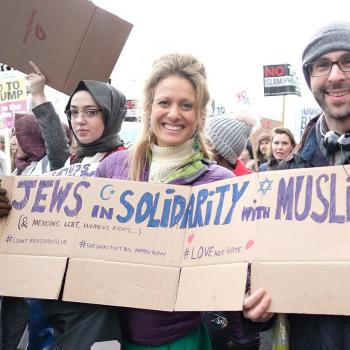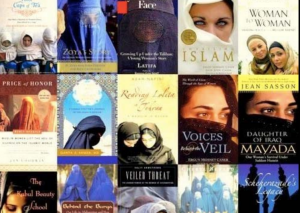My better half just blogged insightfully about the intersection of money, class and gender among North American Muslims.
Some excerpts:
The most high-profile second-generation American Muslims of immigrant origin tend to be high-income, upwardly mobile, elitist. And very fashion-conscious.
As a result, their notions of "modesty" are pricey ones. These notions are pretty specific. The clearance aisle at KMart does not cater to these notions of modesty. Heck, Marshall’s doesn’t. Sears doesn’t. Yes, you can tell meri haisiyyat (my status) from the store-names I drop …
Since I arrived as a FOB on a scholarship, I’ve struggled with these assumptions as I tried unsuccessfully to keep up with the Jamalses.
I’ve also observed other people who are NOT daughters of doctors and engineers agonize over the same issues. Mention "tailored jackets" and "long but elegant modest skirts" and we moslem scrubs know exactly what you’re talking about. The Gap aisles are cleaned out of those $50 skirts before we get to the sales. Scrubs like me can’t afford them Saks tailored jackets. We end up with sagging chenille sweaters and Payless shoes.
She’s not bashing immigrants.
She’s talking about serious social (and, I suspect, sometimes spiritual) blindspots that have long bedeviled the vision of many of the American community’s annointed leaders, who tended to be immigrants. That elitism is/was unintended, but no less inescapable or harmful for that fact.
And no less narcisisstic and obsessed with appearing "respectable" in the eyes of the world. I don’t say this to be nasty, but I’ve long felt that the most powerful intellectual influence on contemporary North American Islamism isn’t Wahhabism, Rationalism, or any of the other usual philosophical suspects, but rather that old sociological standby, Conspicuous Consumption. In layman’s terms, we do many of the things we do not because of some ideology or philosophy in the back of our heads but because of the intense, primordial desire to show off for our peers.
The next generation of Muslim leaders that is emerging has made great strides on many important issues facing the community, but much of the subtle classism and elitism sometimes found among their parents remains, and like a virus has mutated into a hardier and harder to detect strain.
In fact, one could argue it is worse in important respects today, as just as Corporate America today commodifies the language Hippy Counterculture to pawn off greed as idealism, so have many Islamist idealogues appropriated the discourse of anti-racism, gender equity and egalitarianism to camoflage the same tired old hierarchical power relationships that left Blacks, the American-born-but-not-Arabicized, and other American Muslim minorities out in the cold for so long.
Think about that next time you marvel at an MSA khateeb’s painstakingly nasalized Arabic jargon during a khutbah to a group of people who speak only English, or perhaps the erudite and insistent warnings about modesty delivered by a sister in a modest-but-strikingly-elegant Gulf-style abaya. There are all sorts of ways to indulge one’s hawa, and to make beautiful things into ugly shibboleths that raise you above others. Some of them are so common in the community that they’ve become invisible.














